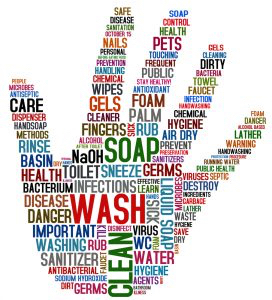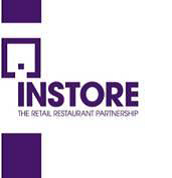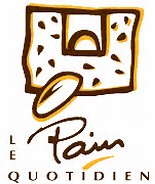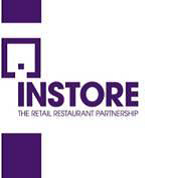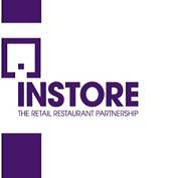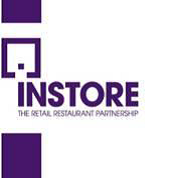Title Page
-
Document No.
-
Audit Title
-
Client / Site
-
Conducted on
-
Prepared by
HACCP All sites must operate a HACCP plan. All CCPs must be monitored, controlled & recorded.
-
The site HACCP plan ensures the site knows where there is a food safety risk and how it must be controlled.
HACCP – Hazard Analysis & Critical Control Points.
CCP - Critical Control Points. -
Do staff know what HACCP is?
-
Do staff know where and what the CCPs are?
-
Paperwork should be in the location where the check is carried out. Is it completed correctly?
Handwashing All staff handling food must wash their hands.
-
Washing & drying hands thoroughly is the best way to prevent bacterial contamination of food.
-
Are all staff & visitors washing and drying their hands properly?
-
Are people washing their hands after touching rubbish or picking things off the floor?
Personal Protective Clothing & Jewellery Rules PPC must be worn correctly. PPC worn in raw meat/fish areas must not be worn in cooked food areas.
-
PPC is worn to protect the food from contamination, not to protect the person from getting their cloths dirty.
PPC worn in butchery or raw meat/fish prep areas can be contaminated with harmful bacteria. -
Are staff conforming by not wearing jewellery or watches?
-
Are coats closed and clean?
-
Are hairnets/beard snoods covering all hair?
-
Is PPC segregated by raw and cooked areas?
Food Storage - Segregation Store raw and ready to eat food separately.
-
This helps to prevent harmful bacteria spreading from raw food to ready-to-eat food.
-
Is raw and ready-to-eat food is stored in separate chillers?<br>If they are in the same chiller are they storing raw meat, poultry, fish and eggs either in separate racking or below ready-to-eat food?<br>
-
Are unwashed fruit and vegetables kept separate from ready-to-eat food?
-
Are cooked foods and other raw and ready-to-eat food kept covered?
Food Storage – Chilled & Frozen Ready-to-eat (RTE) foods such as salads, cooked meats, sandwiches and desserts must be kept cold. Frozen food must be hard frozen with no sign of thawing
-
If these foods are warm, harmful bacteria can grow and make people sick.
-
Are chillers operating at a maximum of 8°C/46°F or less?
-
If RTE food is greater than 8°C/46°F for more than 4 hours IT MUST BE DISCARDED - are there any indications that food is above?
-
Check the fridge temperature records. Are they checking x3/day?
-
Are the temps in spec?
-
Look inside the freezers – walk to the back. Is it free from ice build-up? It might mean the door is regularly left open if there is ice
Pest Control Caterers must check regularly for pests such as flies, cockroaches, mice and rats. If they find evidence of pests, they must take action.
-
Pests carry disease which can contaminate food and make people ill.
-
Is the site free from any small footprints in dust, droppings, holes in walls and doors, nests, gnawed packaging, greasy marks along walls or a strong smell of urine. Bodies of insects, live insects, webbing, nests, maggots?
-
Is the equipment wash areas free from any evidence of cockroaches?
-
Does the pest control file show lots of evidence of pests found, but no action taken?
Shelf Life Control Do not use food after it’s ‘use by’ date.
-
Food with ‘use by’ dates, cooked dishes and other ready-to-eat food have a limited shelf life. If you keep them too long they might not be safe to eat.
-
Does the site use day code stickers, or another method of labelling?
-
Look in the prep fridges – is there anything out of date?
-
Is there ay evidence that they are changing the UB dates on prepped food?
Cooking & Blast Chilling Food must be cooked thoroughly to a minimum of 70°C/158°F for at least 2 minutes or equivalent. Cooking & Cooling are always CCPs.
-
Examples of safe time/temperature combinations include:
• 80°C/176°F for at least 6 seconds.
• 75°C/167°F for at least 30 seconds.
• 70°C/158°F for at least 2 minutes. -
Ask the site to physically check in front of you the food in the prep chiller (i.e. food released from the blast chiller). Is it ≤8°C/46°F?
-
Does the site check the temperature of food using a clean probe? Did they insert the probe so that the tip is in the centre of the food (or the thickest part)?
Hygiene Kitchens should look clean and tidy at all times, even when busy.
-
Poor kitchen hygiene leads to bacterial cross contamination of cooked foods which could cause food poisoning.
-
Focus on the hot kitchen, blast chill, prep holding chill and cold plating areas - are these areas clean and tidy?
-
Check underneath tables and any shelves above tables in the cold kitchen area.
-
Are the ceiling areas above open food clean?
-
Is food on the top rack of trollies covered?
-
Look at the chiller units – are they clean and free from dust?
Allergens The site must have a good understanding of the presence and control of allergenic foods. Chef’s Chats must be accurate and up to date.
-
Cross contamination, incorrectly declared allergens or the accidental incorrect inclusion may result in an allergic reaction onboard.
-
Does the site understand the EU allergen list?
-
Does it control the storage and segregation of allergens? Can you see signage and segregation in place?
-
Check at least two chef’s chats to see if they are correct against the spec and also against what is actually being plated?
Specifications The site should be plating & tray setting according to the BA agreed requirements.
-
If incorrect items are placed onto a plate or tray, the information (allergens) on the chef’s chat may be wrong. This could result in a pax allergic reaction onboard.
Adherence to spec is a key driver of quality & consistency. -
Are specs held at the plating stations?
-
Is the spec up to date & does the plate reflect the spec?
-
Are there any food items laying around the area that are not related to food being plated/tray set?
-
In particular check SPML plating & tray sets, are any items on the area that are not required for the SPMLs, i.e. bread for GFMLs?
Smart Labels Smart labels should be placed into trollies containing ready to eat foods to demonstrate that the chill chain is maintained.
-
If a chiller is not switched on, or it fails, then food will not be adequately chilled and harmful bacteria may grow.
If the smart label is incorrectly activated, it won’t work. -
Do senior management seem interested in your visit?
-
Do SM join you in the unit tour?
-
Do SM lead by example (e.g. coats closed, no watches, jewellery etc.).
-
If you find problems, how do they deal with it? Do they fix it immediately?
-
How engaged are the workforce? Are they scared to talk to you, or are they confident?
-
Do people give the impression that they know what they are doing?
